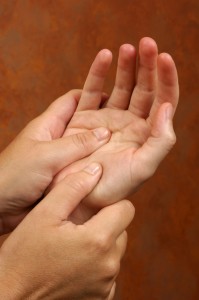 For those of us that work at a desk job 5 days a week, finding ways to minimize the effects of sitting for long periods of time can seem like just another chore to add to the list of things to complete. But even simple changes can make a big difference to your over all health. Here are a few quick and simple fixes you can add to your daily work routine.
For those of us that work at a desk job 5 days a week, finding ways to minimize the effects of sitting for long periods of time can seem like just another chore to add to the list of things to complete. But even simple changes can make a big difference to your over all health. Here are a few quick and simple fixes you can add to your daily work routine.
Walking:
Grab a coffee, walk to pick up your lunch, or go for a quick walk around the office. Always take the stairs instead of the elevator; if you are rushed for time, take the evelvatore half way and walk the other half. Any walking is better than not walking!
Stretching At Your Desk:
One of the worst things you can do for your body is to sit still, it’s hard on your bones, muscles and joints. A lot of low back conditions happen from sitting for long periods of time, because the muscles get weak. Stand up and sit down with no hands to burn a few calories, shrug your shoulders to release your neck muscles, or keep a small set of dumbbells or resistance bands under your desk and use them while you’re on the phone. Try sitting on an exercise ball for part of your day instead of a chair, which will help your posture and keep your abdominal muscles tight.
Stay Hydrated:
It’s important to stay hydrated throughout the day, staying hydrated can help keep your energy up, and reduce headaches.
Stay Accountable:
With the help of technology, it’s easy to stay on track and hold yourself accountable. Wearable devices like Fitbit or Jawbone can help you count your steps, let you know how many calories you’ve burned, and can remind you when it’s time to get up and move.
Cruise The Web:
Mental Health Experts are now encouraging workers to crusie the web. Researchers at the National University of Singapore discovered that web browsing rejuvenated exhausted employees and boosted their productivity; it’s like going for a coffee or snack break.
Desk Hygiene:
Multitasking during lunch is very common; with over 60 percent of us eating lunch or snacking at our desks. This habit can be unsanitary, leaving hidden bacteria on desktops which can encourage bacteria to grow. The desktop should be treated the same way as a kitchen counter-top or table.
There are also steps your employer can take to promote wellness in the workplace:
Encourage Exercise:
Offer discounts or partially subsidize memberships to a local gym or exercise club, or consider bringing in yoga, or tai chi instructors for lunchtime classes.
House-call:
One of the most innovative trends in workplace wellness has been “the doctor’s office visit”. On-site health clinics give employees the opportunity to schedule office visits for routine care without taking time off work.
Encourage Healthy Snacking:
Offer healthy snack options by replacing sodas with juice, or sparkling water, and stocking snack machines with nuts, dried fruit, and other healthy options.
Every small step or change you incorporate into your daily work routine, makes a difference to your overall physical and mental health.



